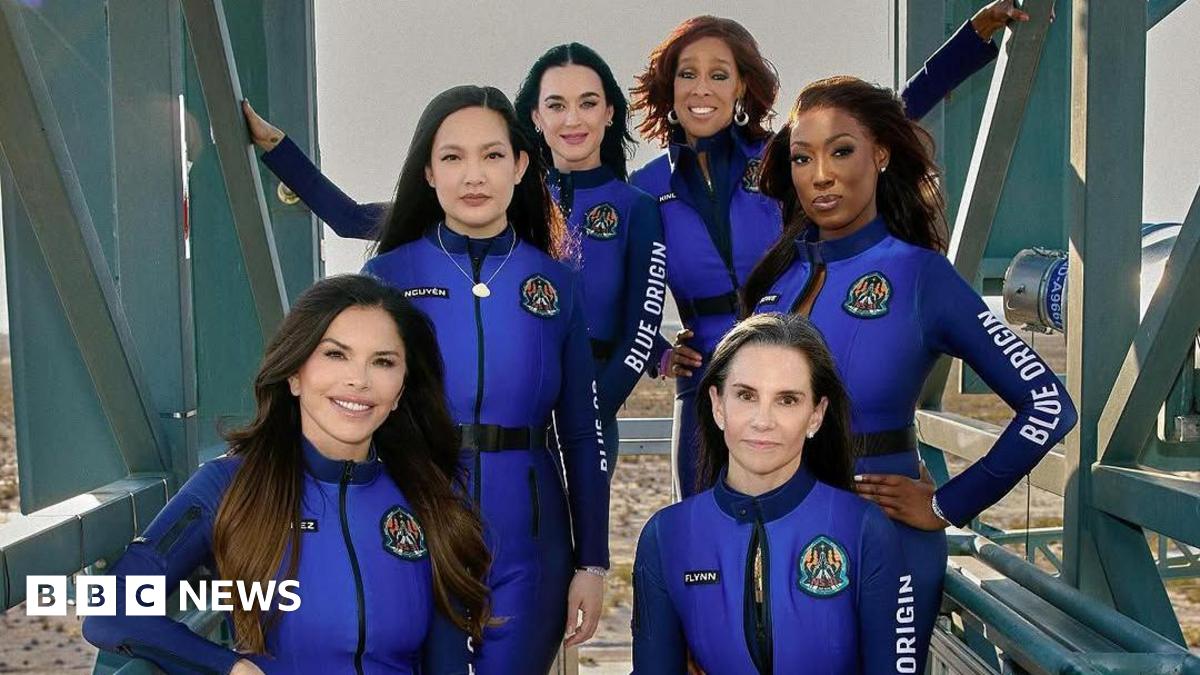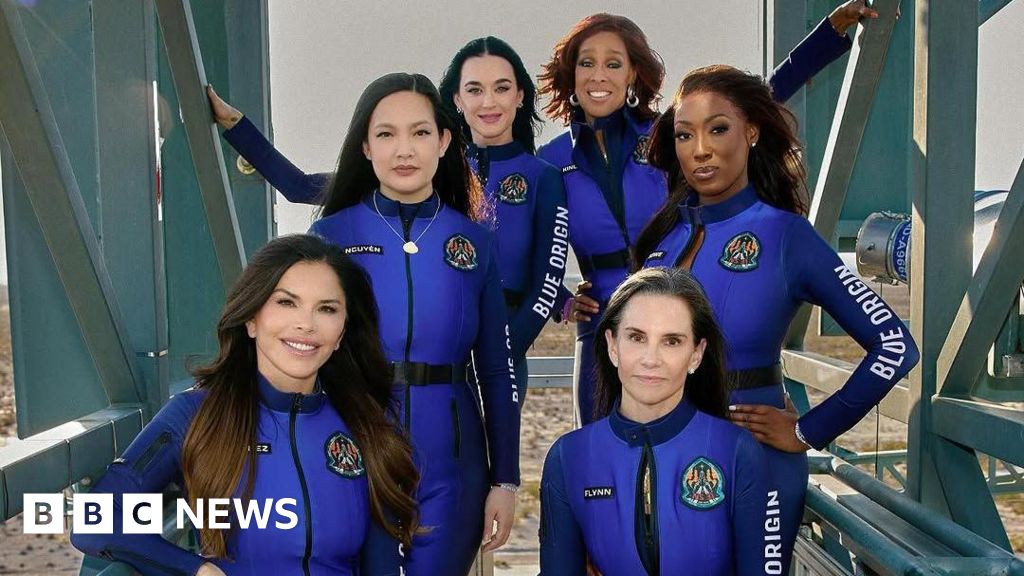Buckle up, space cadets! Today’s not your average Tuesday. Pop superstar Katy Perry and media mogul Gayle King are about to trade their red carpets and news desks for zero gravity and breathtaking cosmic views. They’re blasting off on Blue Origin’s New Shepard rocket, joining a growing list of celebrities and everyday dreamers who’ve taken the leap into space tourism. Hold onto your hats, folks, because this is one launch you won’t want to miss. From liftoff to landing, we’ll bring you all the thrills and chills of this historic journey.
Blue Origin Launch Live: Katy Perry and Gayle King Set to Lift-off into Space on New Shepard Rocket
The New Shepard rocket, developed by Blue Origin, is a cutting-edge spacecraft that has revolutionized space tourism. With its fully autonomous design, the rocket requires no pilots and can carry up to six passengers to an altitude of over 100km (62 miles) above Earth. The spacecraft is equipped with advanced safety features, including a redundant life support system and a state-of-the-art communication system.

Technical Specifications and Features of the New Shepard Rocket
The New Shepard rocket stands at 110 feet (33.5 meters) tall and has a diameter of 7 feet (2.1 meters). It is powered by a BE-3 engine, which produces 110,000 pounds of thrust. The rocket is designed to be fully reusable, with the booster returning to the launch site for vertical landings after each flight.
The spacecraft is equipped with a pressurized capsule that can carry up to six passengers. The capsule is designed to provide a safe and comfortable environment for passengers during the flight, with features such as air conditioning, temperature control, and communication systems.
The New Shepard rocket has undergone extensive testing and has successfully launched multiple payloads into space. The rocket has also carried several notable passengers, including Jeff Bezos, the founder of Blue Origin, and William Shatner, the actor.

Flight Experience and Accessibility of Blue Origin’s Space Tourism Venture
The flight experience on the New Shepard rocket is designed to be thrilling and memorable. The rocket accelerates to an altitude of over 100km (62 miles) above Earth, providing passengers with a few moments of weightlessness. The flight typically lasts around 11 minutes, during which time passengers can enjoy the stunning views of the Earth from space.
Cost and Accessibility of Blue Origin’s Space Tourism Venture
The cost of a ticket on the New Shepard rocket is not publicly disclosed. However, a $150,000 deposit is required to reserve a seat, which underscores the exclusivity of these early flights. Blue Origin is also developing long-term space infrastructure, including reusable rockets and lunar landing systems, which will make space travel more accessible and affordable in the future.
Blue Origin’s space tourism venture has been criticized for its exclusivity and high cost. However, supporters argue that private companies like Blue Origin are accelerating innovation and making space more accessible. Professor Brian Cox told Unionjournalism that “our civilization needs to expand beyond our planet for so many reasons,” and that private companies like Blue Origin are helping to make that happen.
Space Tourism: A Growing Industry Facing Ethical Debates
Space tourism is a growing industry that has the potential to revolutionize the way we travel and explore space. However, it also raises several ethical concerns, including the environmental impact of space travel and the exclusivity of space tourism.
Rise of Space Tourism and Its Potential Benefits
Space tourism has the potential to accelerate scientific research and technological advancements. For example, the data collected during space flights can be used to improve our understanding of the Earth’s atmosphere and climate. Additionally, space tourism can inspire future generations to pursue careers in science, technology, engineering, and mathematics (STEM).
Space tourism can also provide a unique platform for scientific research and experimentation. For example, the microgravity environment of space can be used to conduct experiments that are not possible on Earth. Additionally, space tourism can provide a platform for testing new technologies and materials in a real-world environment.
Katy Perry’s Journey: From Stage to Space
Katy Perry is a renowned pop star who has been making headlines for her upcoming space mission on the New Shepard rocket. Perry will be joining an all-female crew on the mission, which includes Blue Origin owner Jeff Bezos’s fiancée Lauren Sanchez, CBS presenter Gayle King, former Nasa rocket scientist Aisha Bowe, civil rights activist Amanda Nguyen, and film producer Kerianne Flynn.
Personal Journey and Motivations of Katy Perry
Perry has always been fascinated by space and has been an advocate for women in STEM. She has spoken publicly about the importance of inspiring young girls to pursue careers in science and technology. Perry’s decision to join the all-female crew on the New Shepard rocket is a testament to her commitment to empowering women and inspiring future generations.
Perry’s journey to space is not just about personal achievement, but also about making history. She will be joining an elite group of women who have traveled to space, including Valentina Tereshkova, the first woman to travel to space in 1963. Perry’s mission is a milestone in the history of space exploration and a testament to the power of women in STEM.
Intersection of Celebrity Culture and Space Exploration
The intersection of celebrity culture and space exploration is a fascinating topic that has been gaining attention in recent years. Celebrities like Katy Perry and William Shatner are using their platforms to raise awareness about space exploration and to inspire future generations to pursue careers in STEM.
Impact of Celebrity Culture on Space Exploration
Celebrity culture can have a significant impact on space exploration. For example, celebrities can help to raise awareness about the importance of space exploration and inspire young people to pursue careers in STEM. Additionally, celebrities can provide a unique platform for promoting space-related products and services.
The intersection of celebrity culture and space exploration is a complex and multifaceted topic that requires further research and analysis. However, it is clear that celebrities can play a significant role in promoting space exploration and inspiring future generations.
Conclusion
Conclusion: Pioneering a New Era in Space Travel
The recent Blue Origin launch featuring Katy Perry and Gayle King as passengers on the New Shepard rocket marked a significant milestone in the democratization of space travel. The article highlighted the key points of this historic event, including the successful lifting-off of the rocket, the excitement and enthusiasm of the two celebrity passengers, and the pioneering spirit of Blue Origin’s CEO, Jeff Bezos. The main argument of the article centered around the idea that space travel is no longer the exclusive domain of astronauts and governments, but a viable option for civilians, including celebrities and entrepreneurs.
The significance of this event cannot be overstated, as it has far-reaching implications for the future of space travel and exploration. With private companies like Blue Origin and SpaceX leading the charge, we can expect to see increased accessibility and affordability of space travel, paving the way for a new era of space tourism and research. The implications of this trend are profound, from expanding our understanding of the universe to promoting international cooperation and collaboration. As we look to the future, it is clear that the sky is no longer the limit, but rather just the beginning of a new frontier.
As we continue to push the boundaries of space travel, we are reminded that the true power of innovation lies not in the technology itself, but in the people who dare to dream big. The Blue Origin launch serves as a testament to the human spirit of exploration and the boundless potential that awaits us beyond our atmosphere. As we embark on this new journey, we are left with a profound question: what will be the next great leap for humanity? Will it be a return to the moon, a journey to Mars, or something even more extraordinary? One thing is certain – the future of space travel is bright, and the possibilities are endless.
